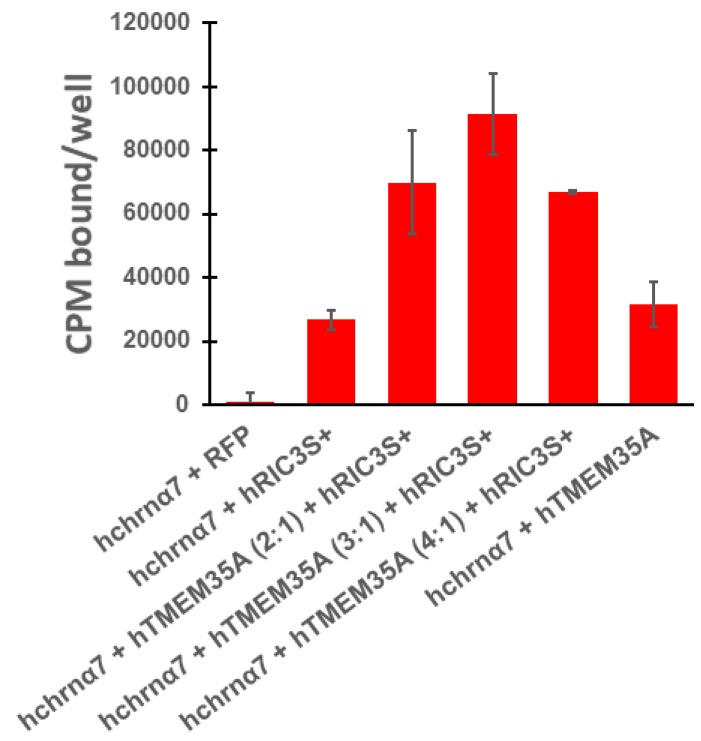Figure 6.
The absence of NACHO in HEK cells has no effect on the ability of RIC3 to promote surface human α7nAChR expression, and the effects of the two chaperones are synergistic when expressed together. Binding assays in 24-well plates were performed as indicated in methods. Total cDNA in transfections was constant, with hchrna7 DNA (0.15 μg/well) that was equaled the sum of htmem35a and hric3 cDNA or RFP DNA (0.15 μg/well RFP DNA in transfection controls). The ratio of 3 parts htmem35a cDNA to 1 part hric3 cDNA (e.g., 0.11 µg htmem35a and 0.04 µg hric3/well) produced the highest surface α7nAChR expression in HEK cells. In all 4 experiments, the combined effects were more than additive. In experiments where RIC3 or NACHO was the only chaperone, surface α7nAChR expression was comparable between these two chaperones as shown.

